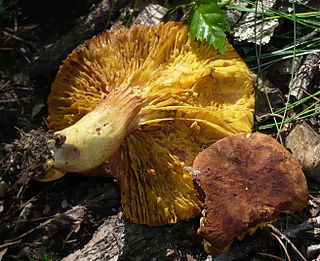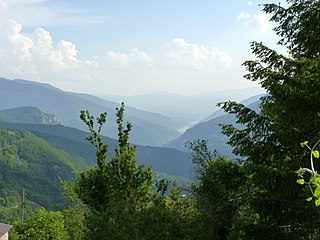Copyright is a type of intellectual property that gives its owner the exclusive right to make copies of a creative work, usually for a limited time. The creative work may be in a literary, artistic, educational, or musical form. Copyright is intended to protect the original expression of an idea in the form of a creative work, but not the idea itself. A copyright is subject to limitations based on public interest considerations, such as the fair use doctrine in the United States.

Bern or Berne is the de facto capital of Switzerland, referred to by the Swiss as their "federal city", in German Bundesstadt, French ville fédérale, and Italian città federale. With a population of about 140,000, Bern is the fifth-most populous city in Switzerland. The Bern agglomeration, which includes 36 municipalities, had a population of 406,900 in 2014. The metropolitan area had a population of 660,000 in 2000. Bern is also the capital of the canton of Bern, the second-most populous of Switzerland's cantons.
A Special Area of Conservation (SAC) is defined in the European Union's Habitats Directive (92/43/EEC), also known as the Directive on the Conservation of Natural Habitats and of Wild Fauna and Flora. They are to protect the 220 habitats and approximately 1000 species listed in annex I and II of the directive which are considered to be of European interest following criteria given in the directive. They must be chosen from the Sites of Community Importance by the State Members and designated SAC by an act assuring the conservation measures of the natural habitat.
The Bern Convention on the Conservation of European Wildlife and Natural Habitats, also known as the Bern Convention, is a binding international legal instrument in the field of Nature Conservation, it covers the natural heritage in Europe, as well as in some African countries. The Convention was open for signature on 19 September 1979 and came into force on 1 June 1982. It is particularly concerned about protecting natural habitats and endangered species, including migratory species.
The Emerald network is a network of Areas of Special Conservation Interest to conserve wild flora and fauna and their natural habitats of Europe, which was launched in 1989 by the Council of Europe as part of its work under the Convention on the Conservation of European Wildlife and Natural Habitats or Bern Convention that came into force on 1 June 1982. It is to be set up in each Contracting Party or observer state to the Convention.
The Habitats Directive is a European Union directive adopted in 1992 as an EU response to the Berne Convention. It is one of the European Union's directives in relation to wildlife and nature conservation, another being the Birds Directive. The Habitats Directive, together with the Birds Directive, are also called the "nature directives". The Habitats Directive requires national governments to specify areas that are expected to be ensuring the conservation of flora and fauna species. This led to the setting up of a network of protected areas across the EU, special areas of conservation which together with the existing Special Protection Areas, became the so-called Natura 2000 network established to protect species and habitats. The annexes of the directive outline the protected habitats and species:
The United International Bureaux for the Protection of Intellectual Property (BIRPI) was an international organization. It was set up in 1893 to administer the Berne Convention for the Protection of Literary and Artistic Works and the Paris Convention for the Protection of Industrial Property. The BIRPI is the predecessor of the World Intellectual Property Organization (WIPO).
The rule of the shorter term, also called the comparison of terms, is a provision in international copyright treaties. The provision allows that signatory countries can limit the duration of copyright they grant to foreign works under national treatment to no more than the copyright term granted in the country of origin of the work.
The Berne Gauge or Berne Convention Gauge is an informal but widely used term for the railway loading gauge considered the standard gauge in most of Europe. The term arises from the international railway conference held and consequent convention signed in Bern, Switzerland in 1912. The official name of this gauge is the Gabarit passe-partout international, and it came into force in 1914.
Bern is the capital of Switzerland.

The Berne Convention for the Protection of Literary and Artistic Works, usually known as the Berne Convention, is an international agreement governing copyright, which was first accepted in Berne, Switzerland, in 1886.

Phylloporus pelletieri, commonly known as the golden-gilled bolete, is a species of fungus in the family Boletaceae.
The Club de Berne is an intelligence sharing forum between the intelligence services of the 28 states of the European Union (EU), Norway and Switzerland, named after the city of Bern. It is an institution based on voluntary exchange of secrets, experience and views as well as discussing problems. The Club has existed since 1971 and has no secretariat and takes no decisions.

The lesser mouse-eared bat is a species of insectivorous bat in the family Vespertilionidae.
The following is a timeline of the history of the municipality of Bern, Switzerland.
International School of Berne (ISBerne) is an international school in Gümligen, Muri bei Bern, Switzerland. It serves students from early childhood through grade 12.
The University of the Arts Bern is an art school with locations in Bern and Biel/Bienne. It was created in 2003 from the merger of the University of Music and Theatre and the School of Design, Art and Conservation. The educational institution is one of eight departments of the Bern University of Applied Sciences. Students and lecturers of the HKB come from over 30 countries. The HKB works in research and as an organizer according to information closely with Swiss and international partners from culture, society and economy together, enabling even large-scale projects such as the Biennale Bern. It also contributes to cultural life in Berne.

Ana Colovic Lesoska is a Macedonian biologist who since 2011 has campaigned against the construction of dams for hydroelectric power production in the Mavrovo National Park in order to safeguard threatened species, including the Balkan lynx. This led to the withdrawal of loans from the World Bank and the European Bank for Reconstruction and Development (EBRD), convincing the Government of North Macedonia to suspend further work on dams in the national park. In recognition of her efforts, in April 2019 she was one of six environmentalists to be awarded the Goldman Environmental Prize.

The biogeographic regions of Europe are biogeographic regions defined by the European Environment Agency. They were initially limited to the European Union member states, but later extended to cover all of Europe west of the Urals, including all of Turkey. The map of biogeographic regions is deliberately simplified and ignores local anomalies. It is intended primarily as a framework for coordinating and reporting overall results of conservation efforts.

An Area of Special Conservation Interest (ASCI) is a protected area in Europe or North Africa, part of the Emerald network established by the countries who have signed the Berne Convention on the Conservation of European Wildlife and Natural Habitats. The purpose of the ASCIs is to conserve and protect habitats and species defined in the convention.






